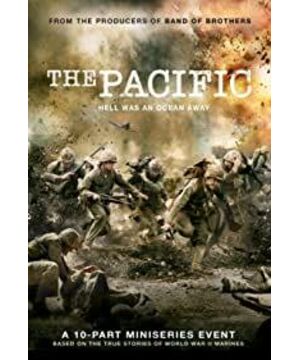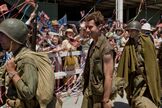1. Japan announced its surrender on August 15, 1945. On the same day, all major newspapers in the United States used large PEACE on their front pages. (Peace) as the headline. However, it was not all good news that day. In the corner of the front page, the newspaper published the news that the USS Indianapolis was sunk during an operation against Japan, and that only 300 of the 1,200 crew members survived. This may also be the case. At the end of the entire World War II, a large-scale battle casualty was reported. In addition, due to the national celebrations in the United States, more than 300 people died unexpectedly in the country due to the celebration of victory in 3 days.
2. If Japan does not surrender so early, the next target of the US military is South Kyushu (Operation Olympics), and plans to land on Honshu Island in Japan the following year (Operation Crown). The land and navy forces required to land in Honshu, Japan will even exceed the Normandy landing. According to post-war analysis, Japan’s judgment on the landing point of the Allied forces is basically accurate and relatively adequate preparations have been made. It can be predicted that if the Allied forces actually implement Operation Crown, they may suffer extremely heavy casualties. Before the Japanese surrender, the US military assessed the possible casualties of attacking Japan. Some people took the Battle of Wright Island as a model and believed that the Japanese army was vulnerable, and some people took the Battle of Okinawa as a reference and believed that they would suffer 1 million. The above casualties! The U.S. Army also pre-made 500,000 Purple Star Medals. These purple stars have gone through the Korean War, Vietnam War, and Iraq War, and they have not been issued until today!
3. After the end of the war, the U.S. Army quickly set about arranging landing operations in Japan. For various reasons, the 1st Marine Division and the 6th Marine Division (one less than one regiment) were sent to China for garrison. Among them, the 1st Marine Division was at the end of September 1945. Landed in Tianjin, and the 6th Marine Division landed in Qingdao. The U.S. military has the following main purposes: one is to repatriate Japanese prisoners of war. Since there are no regular troops of the national army in the northern region, and the Japanese troops are mainly concentrated in several large cities, the U.S. military has undertaken this task; the second is to take back allied forces. Prisoners of war; the third is the Soviet army from the northeast of the embankment all the way south; the fourth is to control several large cities to prevent them from being captured by our army. It was against this background that Eugene came to Peking at the time and stayed until 1946. During the Chinese stationing period, because it was considered to be on the side of the national army, the Marine Corps had several small frictions with our army. A total of 13 Marines died before and after. In addition, the Shen Chong incident that everyone knows was also stationed in Beiping at that time. Soldiers of the 1st Marine Division. In the end, the 1st Marine Division was completely withdrawn from China on September 1, 1947.
4. After the war, the US military was disarmed. At the peak of the war, the Marine Corps reached more than 480,000 men, and only about 100,000 people remained a year later. The 3rd, 4th, 5th, and 6th Marines were withdrawn one after another. , The 1st Marine Division and the 2nd Marine Division also shrank significantly, of which the 1st Marine Division until the early 1950s had only one reinforced regiment left. In this case, many people in the United States proposed to abolish the Marine Corps establishment and merge it into the Navy and Army. Due to the firm opposition of Van der Greft and Edison and the sympathy of the Marine Corps in Congress. With the help of the team members, the Marine Corps was eventually saved, but the staffing level was reduced to the lowest level.
5. Many people are asking about the final outcome of JP. After checking, there may be two theories. One is that JP died in a car accident in 1944-1945, when his wife abandoned him and JP chased after him angrily. He died in a car accident halfway through; another theory is that JP died of illness in the 1980s. Since there is no exact statement, and it is not a happy ending, it may be omitted. Some other people, such as the old sergeant chief and JAY, may not be released in the finale for the same reason. In the finale, there are two relatively unfamiliar faces. They are the two rookies who witnessed the death of Basilon. One of them, Tatum, seems to be alive and has served as the chairman of the Stockton Marines Club. Here is also a special talk about the old officer Puller. He is one of the people who have won the most medals in the history of the Marine Corps. He was injured at least three times in World War II and participated in many battles such as the Incheon Landing and the Battle of Changjin Lake in the Korean War. . Pooler’s only regret may be that he failed to win the Medal of Honor, which is said to have offended the Army (for example, in the Korean battlefield, Pooler commanded the Marines to collect all the equipment left by the fleeing Army for reuse, and refused to re-use it. Returned to the Army; he also criticized the Army for its low combat effectiveness in the Battle of Changjin Lake); In addition, many members of Puller’s family also joined the Marine Corps. His brother was shot and killed by Japanese snipers in the Battle of Guam. His son was maimed by a landmine during the Vietnam War; Puller was promoted to lieutenant general and died in 1971.
6. Japan signed the letter of surrender on the battleship Missouri on September 2, 1945. On that day, three bloody destroyers were awarded the honor of escorting the Missouri. They were: Obannon, Taylor, and Nicholas. . The three destroyer fleets have been fighting bloody battles from the Solomon Islands all the way to Tokyo Bay. They are outstanding representatives of the US Navy in World War II.
View more about The Pacific reviews











